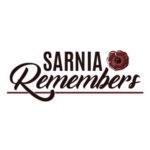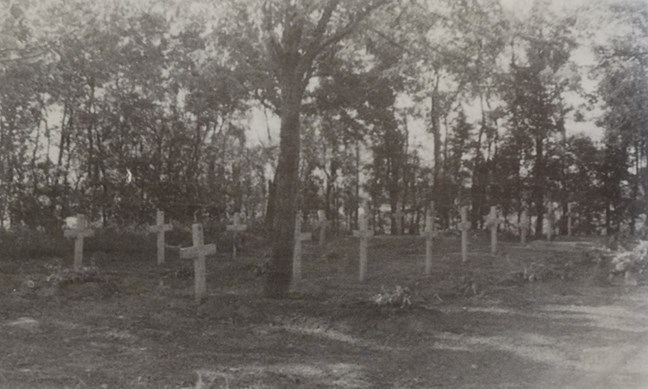 By Tom Slater and Tom St. Amand
By Tom Slater and Tom St. Amand
Ernest “Ernie” Ottaway had every reason not to join the Canadian Armed Forces in 1939.
At 27, he was young and physically fit, but he had his family to consider. Three years prior, Ernie had married Gertrude “Gertie” (Hallem) and they were the proud parents of one year old Marlene. The young family was living on Nelson Street and Ernest found work as a printer and a painter.
He also remembered the grim toll war had exacted on his father. In 1921, shortly after the Ottaway family had moved from Calgary to Ontario, Ernest Sr., 32, passed away from lung congestion. The Great War veteran had been gassed in France five years earlier and his compromised breathing ended his life.
Ernie, though, was anxious to serve his country if the need arose. From May 1937 until July 1938, he was a member of the local Sarnia militia unit, the 11th Field Company, Royal Canadian Engineers (RCE).
And then two days before Canada declared war on Germany in September 1939, he was one of the first local men to enlist.
In August 1940, after training in Ontario, Ottaway arrived in the UK as a Sergeant-Major with the Royal Canadian Engineers, 11th Field Company. Over his two years of eventful training, he commanded a battalion and instructed at a bomb school.
In March 1943, he returned to Ontario to take an Officer's Training Course and arrived in Sarnia just in time for Marlene's fifth birthday. Gertie and Marlene met Ernie at the train station and although she hadn't seen her father in three years, Marlene rushed to him.
“She knew him instantly,” Gertie said.
While in Sarnia, he shared his overseas experiences with a local reporter. Although he wasn't at the front, he'd faced death a few times in England. One time in particular, a German plane had dropped a bomb near a truck he was driving. The blast lifted his truck over a four foot hedge before depositing both the truck and him in a roadside field. Miraculously, he was uninjured.
His officer's course completed successfully, Ernie kissed Gertie and Marlene goodbye in February 1944, the same month he returned to England for further training. In late August, Lieutenant Ottaway arrived in France as a member of the Queen’s Own Rifles of Canada, Royal Canadian Infantry Corps (RCIC).
After six weeks of intense fighting that featured stop-and-start advances against stiff resistance in fortified positions, the Canadians had helped liberate ports and villages in Northern France and Belgium; however, the Germans still controlled the 45-mile-long Scheldt estuary near the Belgian-Dutch border that connected the port of Antwerp to the North Sea.
In early October 1944, the Canadians were entrusted with liberating the estuary.
Ernie wrote Gertie on October 16th that he had just finished engaging the enemy as a replacement officer with a platoon of the Queen’s Own Rifles of Canada.
Five days later, the Canadians had driven the Germans from the village of Ijzendijke and were pursuing them into the heavily defended belt based on the town of Oostburg. Ernie's platoon was assigned the dangerous mission of assessing the German defences in the area around a large farm. The Canadians suspected the Germans had several machine guns and snipers, but they needed confirmation.
As Ernie led his platoon across a ditch towards the farm, he triggered an anti-personnel mine that killed him instantly.
The Sarnian who didn't have to serve, chose to do so with tragic results.
Ernie Ottaway, 32, left behind Gertie, six-year-old Marlene, and his mother and his sister —all in Sarnia. In December, a memorial service was held at St. George's Anglican Church, his home parish.
He is buried in Adegem Canadian War Cemetery, Belgium. On Ernie's headstone are inscribed the words, IN LOVING MEMORY OF MY DEAR HUSBAND WHO WAS KILLED IN OOSTBURG, HOLLAND.

